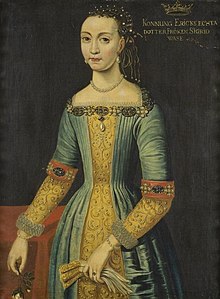Forty years have passed since the untimely demise of Princess Sophia of Greece and Denmark, a member of the royal family whose life was marked by tragedy and loss. Born on June 2, 1938, Sophia was the youngest child of King Paul of Greece and Queen Frederica of Hanover, and her life was forever changed by the tumultuous events that unfolded in Greece during World War II.
Princess Sophia was just 13 years old when her family was forced into exile, leaving behind the throne of Greece. Her father, King Paul, was succeeded by her uncle, King George II, but Sophia's life was forever impacted by the trauma of her early years. As she grew older, Sophia's path diverged from that of her royal family, and she went on to lead a life marked by quiet dedication to her family and her faith. Her passing on December 17, 1981, was a poignant reminder of the fragility of life and the enduring legacy of those who have left an indelible mark on history.
what is the significance of princess in history
 The title of princess has played a significant role in history, particularly in the context of royal families and monarchies. Historically, a princess was a female member of a royal family, often the daughter of a king or queen, and held a position of prestige and influence within the royal household. The term "princess" is derived from the Latin word "princeps," meaning "principal citizen," and was initially used to describe the consort of a prince or the daughter of a monarch.
In medieval times, being a princess was often seen as a glamorous and highly desirable position, but the reality was far from the fairy-tale image. Princesses were expected to bear children, entertain guests, and support their husbands in their political activities, all while navigating the complex politics of court life and facing the risks of childbirth and war.
Throughout history, princesses have held various levels of power and influence, from ruling monarchs in their own right to being used as pawns in political alliances and marriages. Some notable examples include Eleanor of Aquitaine, who marshaled her husband's army to defend her home and children, and Joan of Acre, who married for love despite the disapproval of her father.
In modern times, the title of princess continues to hold significance, particularly in the context of royal families. The Princess of Wales, for instance, is a title held by the wife of the Prince of Wales, and is often associated with a high level of social and cultural influence. The historical significance of the title princess lies in its representation of the complex and multifaceted roles that women have played in shaping the course of history, often in the shadows of their male counterparts.
The title of princess has played a significant role in history, particularly in the context of royal families and monarchies. Historically, a princess was a female member of a royal family, often the daughter of a king or queen, and held a position of prestige and influence within the royal household. The term "princess" is derived from the Latin word "princeps," meaning "principal citizen," and was initially used to describe the consort of a prince or the daughter of a monarch.
In medieval times, being a princess was often seen as a glamorous and highly desirable position, but the reality was far from the fairy-tale image. Princesses were expected to bear children, entertain guests, and support their husbands in their political activities, all while navigating the complex politics of court life and facing the risks of childbirth and war.
Throughout history, princesses have held various levels of power and influence, from ruling monarchs in their own right to being used as pawns in political alliances and marriages. Some notable examples include Eleanor of Aquitaine, who marshaled her husband's army to defend her home and children, and Joan of Acre, who married for love despite the disapproval of her father.
In modern times, the title of princess continues to hold significance, particularly in the context of royal families. The Princess of Wales, for instance, is a title held by the wife of the Prince of Wales, and is often associated with a high level of social and cultural influence. The historical significance of the title princess lies in its representation of the complex and multifaceted roles that women have played in shaping the course of history, often in the shadows of their male counterparts.what was the role of princesses in medieval society
 In medieval society, princesses played significant roles that went beyond the romanticized notion of fairy tales and castles. They were often used as political pawns to secure alliances between royal families through marriage, which was a crucial aspect of maintaining power and stability in the kingdom. This strategic use of marriage was particularly prevalent in the Middle Ages, where the primary purpose of a princess or young queen was to produce an heir, preferably a male heir who could ascend to the throne after his father.
Princesses were also expected to participate in the governance of their kingdom, attending council meetings and engaging in charity work, which was seen as a vital part of their social duties. They were educated in various aspects of governance, including management of the household and dispensing charity, as well as in public affairs, politics, and history.
Despite the challenges they faced, such as being uprooted from their homes and sent to marry into foreign royal families, many princesses rose to prominence and played important roles in public life. They were often expected to conform to societal norms, particularly in regards to their roles as wives and mothers, but some princesses, like Eleanor of Aquitaine, defied these expectations and demonstrated remarkable strength and determination.
The life of a medieval princess was not detached from the turbulent politics of the time, and they were often embroiled in the complex web of alliances and rivalries between kingdoms. Their roles were multifaceted, encompassing both the dispensation of charity and the management of state affairs, making them a vital part of the medieval royal landscape.
In medieval society, princesses played significant roles that went beyond the romanticized notion of fairy tales and castles. They were often used as political pawns to secure alliances between royal families through marriage, which was a crucial aspect of maintaining power and stability in the kingdom. This strategic use of marriage was particularly prevalent in the Middle Ages, where the primary purpose of a princess or young queen was to produce an heir, preferably a male heir who could ascend to the throne after his father.
Princesses were also expected to participate in the governance of their kingdom, attending council meetings and engaging in charity work, which was seen as a vital part of their social duties. They were educated in various aspects of governance, including management of the household and dispensing charity, as well as in public affairs, politics, and history.
Despite the challenges they faced, such as being uprooted from their homes and sent to marry into foreign royal families, many princesses rose to prominence and played important roles in public life. They were often expected to conform to societal norms, particularly in regards to their roles as wives and mothers, but some princesses, like Eleanor of Aquitaine, defied these expectations and demonstrated remarkable strength and determination.
The life of a medieval princess was not detached from the turbulent politics of the time, and they were often embroiled in the complex web of alliances and rivalries between kingdoms. Their roles were multifaceted, encompassing both the dispensation of charity and the management of state affairs, making them a vital part of the medieval royal landscape.what were the expectations for princesses in terms of behavior and conduct
The expectations for princesses in medieval society were multifaceted and centered around their roles as wives, mothers, and members of the royal family. They were expected to embody the ideal of the "good woman," which encompassed virtues such as beauty, piety, and a commitment to their family and kingdom. This ideal was encapsulated in the concept of the "four goods" and the "three Ps," which emphasized the importance of being a good wife, mother, ruler, and peacemaker. In terms of specific behavior and conduct, princesses were expected to be chaste, wise, and of honest life, as described by William Caxton in his 15th-century book "The Game and Playe of Chesse". They were also expected to be gracious hosts and entertainers, supporting their husbands in their political activities and attending courtly events. Princesses were also expected to be beautiful, as beauty was seen as a key aspect of a queen's role. This emphasis on beauty is evident in the descriptions of queens in medieval literature and the importance placed on it in the selection of brides by kings, as seen in Alfonso X of Castile's code of law, Las Siete Partidas. In summary, the expectations for princesses in medieval society revolved around their roles as wives, mothers, and members of the royal family, emphasizing virtues such as beauty, piety, and a commitment to their family and kingdom. |
Princess Alice, Countess of Athlone, in 1963. Photograph © Yevonde Portrait Archive / Mary Evans Picture Library. |
 |
| The Countess of Athlone curtsies to the Queen; Princess Margaret stands behind them. Photograph © Rex Photos. |
 |
The Duke and Duchess of Albany with their daughter Princess Alice. Photograph © National Portrait Gallery, London. |
 |
| Prince Alexander of Teck and Princess Alice of Albany on their wedding day. Photograph © Royal Collection Trust. |
 |
| Princess Alice, Countess of Athlone, 1941. |
 |
| Princess Anne and Princess Alice, Countess of Athlone, in London, 1969. |
As we conclude our reflection on the life and legacy of Princess Sophia, it is essential to acknowledge the profound impact she had on those around her. Her unwavering dedication to her family and her faith, as well as her quiet strength in the face of adversity, are qualities that continue to inspire and motivate us today. The 40 years since her passing have not diminished the significance of her story, and we are reminded that even in the darkest of times, there is always hope and resilience to be found.
As we move forward, it is crucial that we continue to honor Princess Sophia's memory by embracing the values she embodied. Her life serves as a testament to the power of faith, family, and perseverance, and it is our responsibility to carry these principles forward. By doing so, we not only pay tribute to her remarkable life but also ensure that her legacy continues to inspire future generations. May we all strive to emulate the strength and devotion that characterized Princess Sophia's life, and may her story remain a beacon of hope and guidance for years to come.


No comments:
Post a Comment